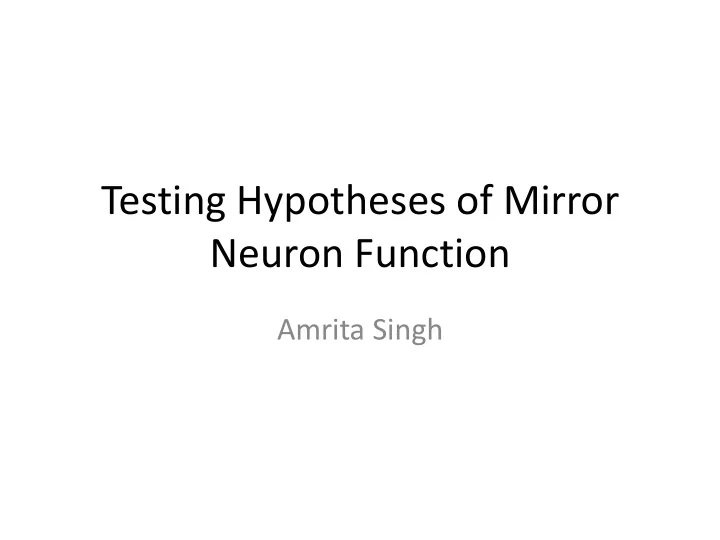

Testing Hypotheses of Mirror Neuron Function Amrita Singh
Background Cognitive System Motor Perception System System
Common Coding Theory (William James, Roger Sperry etc.) Action Perceptual Representations Representations Grasping Throwing
Mirror Neurons: Embodiment of Common Code
Does the common code extend to spatial and temporal characteristics of actions? Mental imitation of perceived actions Advantage in perceiving self- generated actions
Analogy Prediction based on known data
Experimental Design • Dart board divided into two halves, participants must aim for one half • Videos will show throwing action only • Pairs of participants will watch their own and each other’s videos, judge which half is aimed
Interpretation of Results Sensitivity of each participant will be calculated for self- and other-generated actions: d’ = z(U) + z(L) U = Fraction of upper-half throws identified correctly L = Fraction of lower-half throws identified correctly z(p) = Inverse of normal distribution d’ values for the two cases will be compared.
Further Insights • Results dispute claim for development of mirror neurons through Hebbian learning (Keysers, Gazzola et al)
References • Rizzolatti, Giacomo, et al. "Premotor cortex and the recognition of motor actions." Cognitive brain research 3.2 (1996): 131-141. • Jeannerod, Marc. Motor cognition: What actions tell the self. No. 42. Oxford University Press, 2006. • Knoblich, Günther, and Rüdiger Flach. "Predicting the effects of actions: Interactions of perception and action." Psychological Science 12.6 (2001): 467-472. • Keysers, Christian, and Valeria Gazzola. "Hebbian learning and predictive mirror neurons for actions, sensations and emotions." Philosophical Transactions of the Royal Society B: Biological Sciences 369.1644 (2014): 20130175. • Kilner, J. M., Y. Paulignan, and S. J. Blakemore. "An interference effect of observed biological movement on action." Current Biology 13.6 (2003): 522-525.
Recommend
More recommend